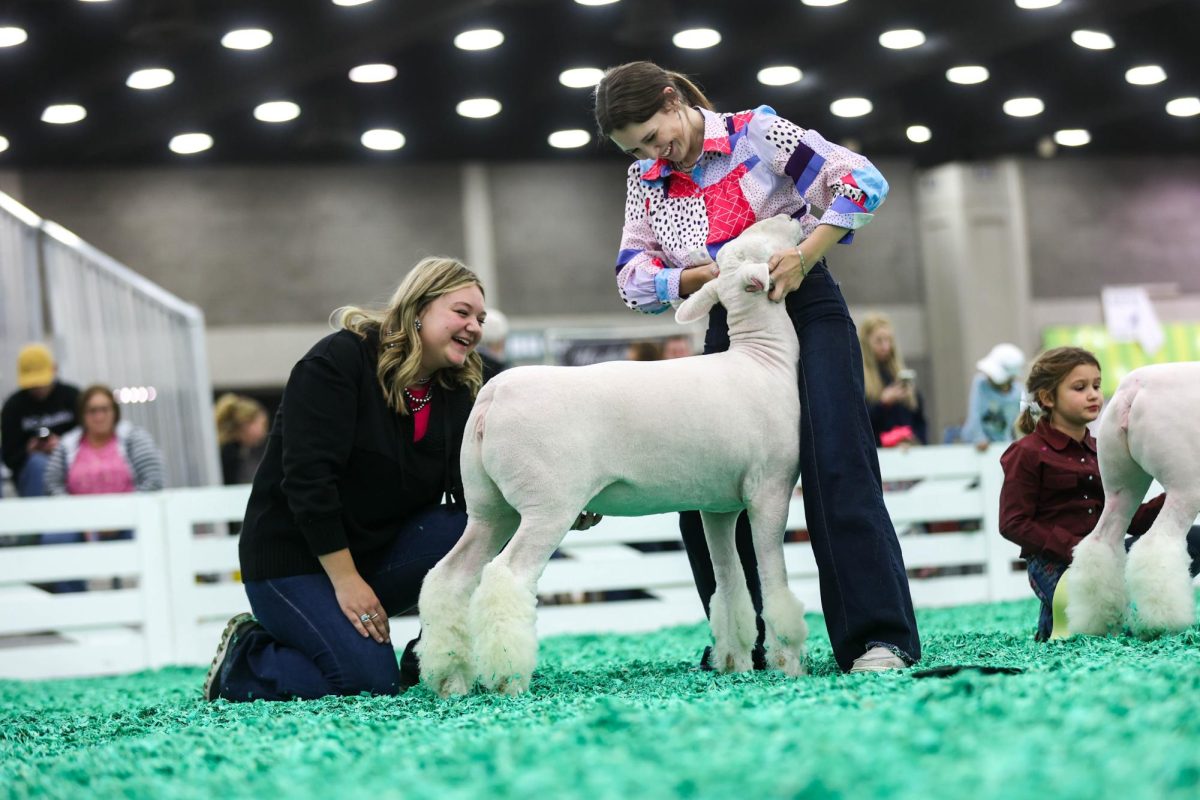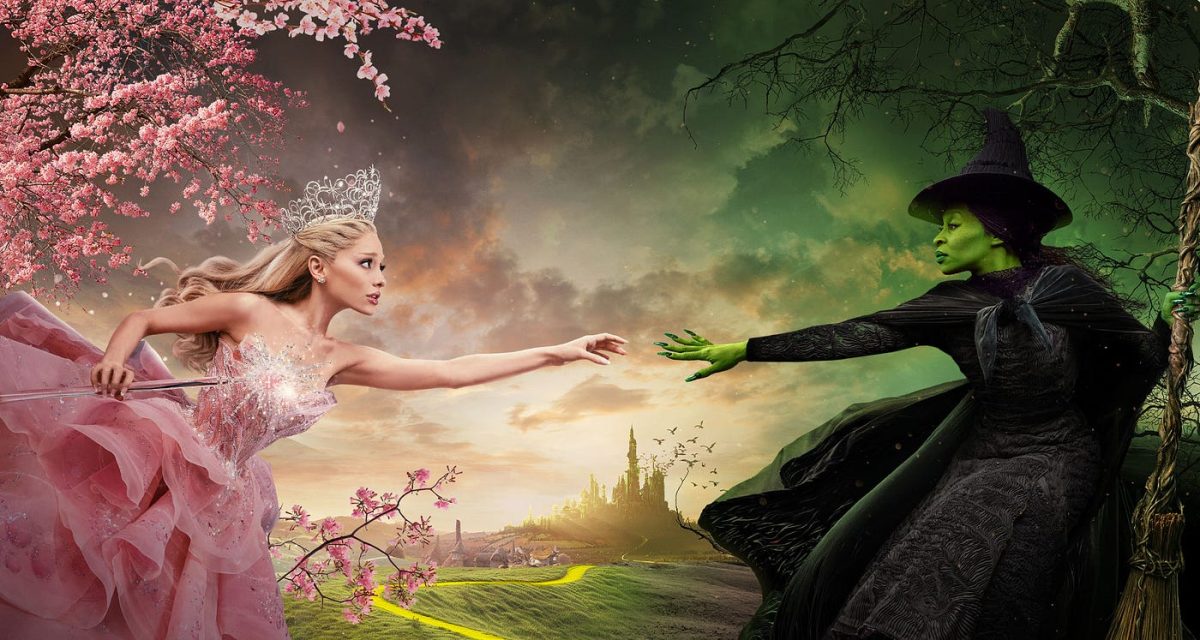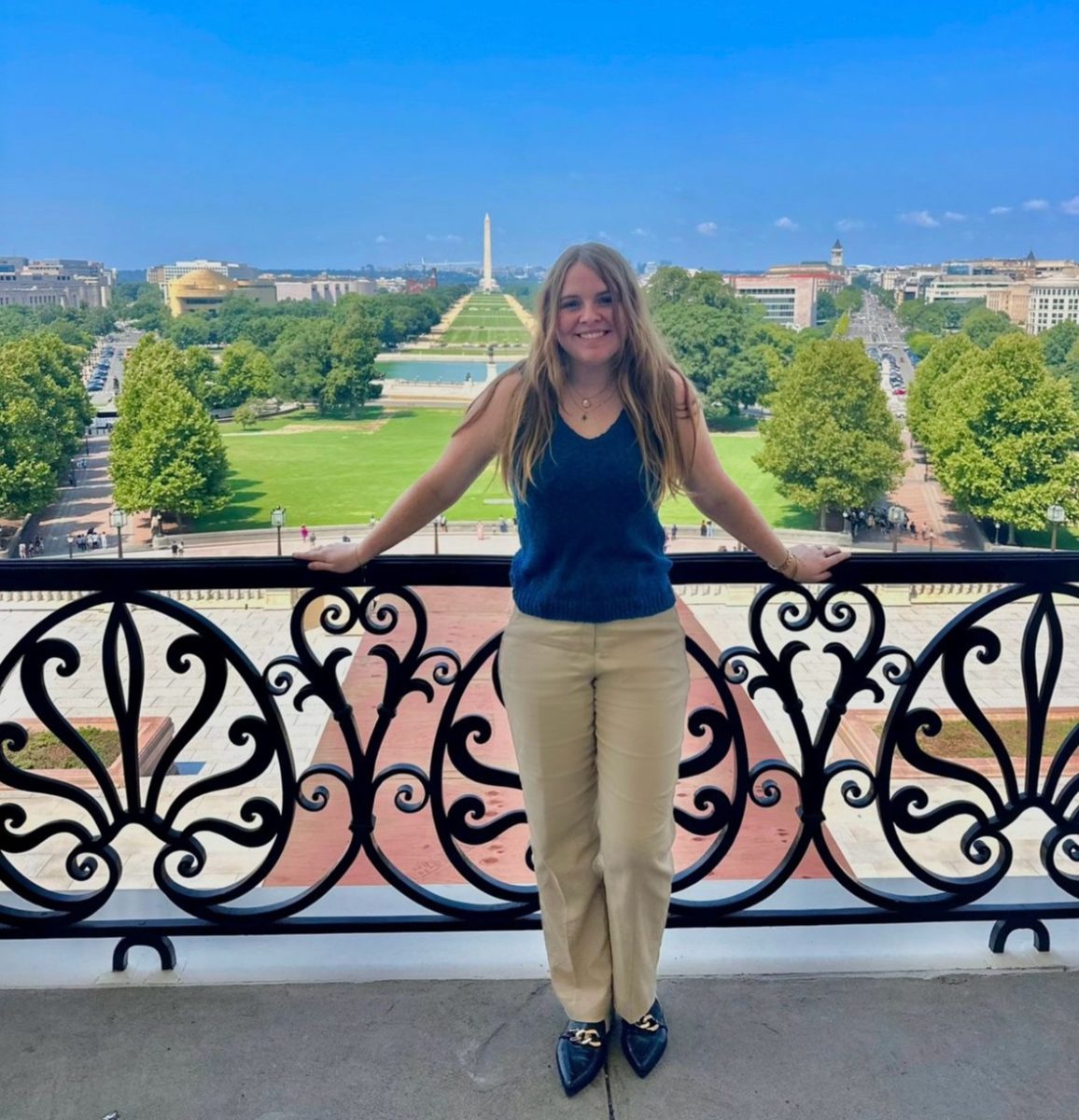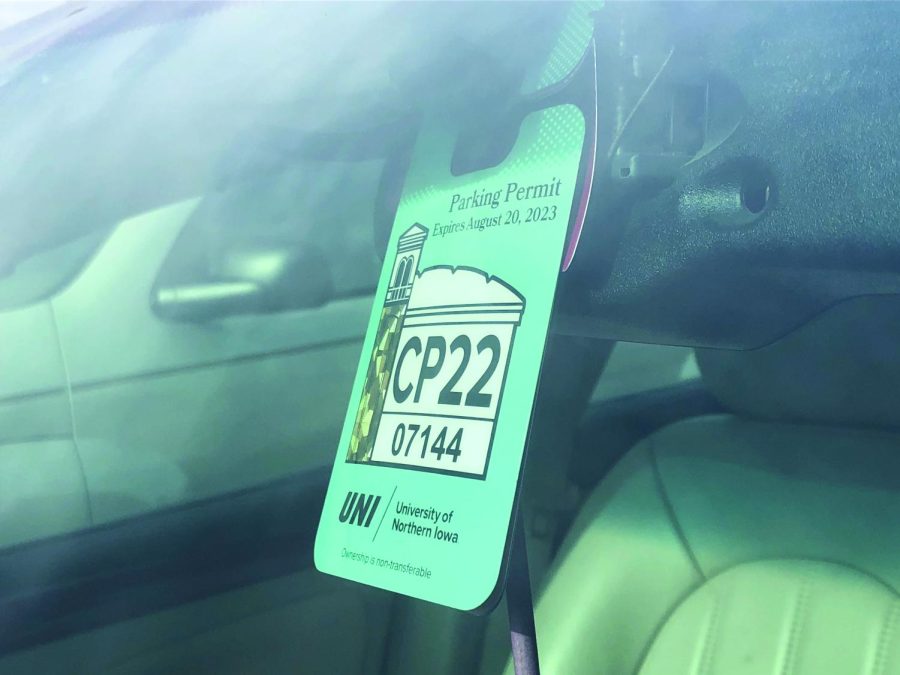That’s showbiz!
When thinking of this popular phrase, many people may think of the entertainment industry. However, for someone like Ella Jahner, a different type of show business is much more of a focus in her life.
Jahner has been showing livestock her entire life. The senior University of Northern Iowa student grew up on her family farm in Harvey, Iowa and attended Pella High School. She is majoring in interactive digital studies and will graduate this semester.
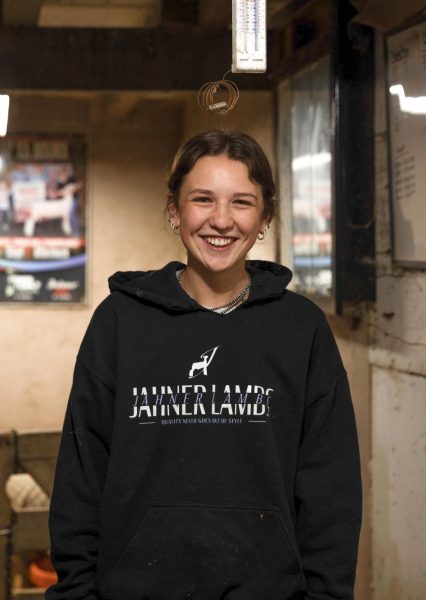
Jahner and her family mainly show purebred Dorset lambs and recently competed in the North American International Livestock Exposition (NAILE) in Louisville, Kentucky. It is the largest breeding show in the nation and every breed is represented. More than 27,000 livestock entries were submitted and 48 states were represented in the competition. This year, Jahner placed third in her category. Last year, she won first place.
“It’s all about the handshake…you don’t know if you’ve won or not until the judge comes up to you,” Jahner said.
In order to even win her category last year, Jahner first had to win her class which consisted of about 15 or 20 competitors. Classes are based on the birthdate of the lamb and include a fall, winter, and spring class. The judge decides the overall champion by picking their favorite amongst the top two finishers from each class.
For breeding, participants show both rams and ewes. A ram is an intact male sheep and a ewe is a female sheep that is over a year old.
Last year, Jahner won Champion Slick Sheared Dorset Ram with her ram, Gypsy King.
“We call him GK for short. He is named after the professional boxer because he never lost his whole year of showing,” Jahner said.
This year the ram that Jahner placed third with in her category was named Ren, based on the 90’s sitcom: The Ren & Stimpy Show. The animated show follows the unusual adventures of a chihuahua named Ren and a manx cat named Stimpson J. Cat.
“He’s just goofy. Like that’s the best way to explain it, he’s just kind of goofy and that’s where my dad thought of it,” Jahner said.
Jahner’s dad, Roy, is one of the main reasons Jahner’s family got into showing sheep. In high school, Roy got a job showing livestock with his neighbor and fell in love with it. He helped his neighbor raise lambs for commercial farming and eventually started to run his own farm, Jahner Lambs, with his family and other relatives. The family has been in the showing industry for over 35 years. Each person in the Jahner family started showing at the state fair when they were 5 years old.
Jahner grew up helping on the farm from a young age, which meant she took some blunt hits as a small child from being around the lambs.
“I used to get trampled a lot ‘cause I was really small. I’m really tall now but when I was younger I would just get pushed around a lot. So whenever we were sorting ewes, ewes would just come over and hit me. I would always say as a kid, ‘Oh my gosh I just got trampled again,’” Jahner said. “My dad would be able to just grab me and pick me up by the back. That’s how he would always find me– with my face planted down.”
Jahner eventually followed her family’s tradition of showing at the state fair when she was 5 years old – even if it did happen in a more unconventional way.
“My first year when I showed at the state fair, I didn’t really show, I just danced the whole time … They’ve always said, ‘She was made for the show ring,’ because I’ve always felt comfortable with it,” Jahner said.
When Jahner and her brother, Chandler, first started showing livestock, they initially showed crossbred lambs and goats. After Jahner got into high school, the family wanted to try something new, so they started breeding purebred Dorset lambs. This is their sixth or seventh year of breeding the lambs.
The family usually picks the show lambs that will compete each year in March or April. When breeding the lambs, the family tries to be as strategic as possible.
“You’re just trying to find the one that is going to be the most complete … We look at genetics in the past a lot of the time as well … Because it’s one person’s opinion on one day, you’re trying to look at trends in a sense. What’s working right now in this year might not work in the next year so it’s ever changing all the time,” Jahner said.
Some examples of what a judge may look for include lambs that are skinny and tall. Other judges may want the opposite. However, there are certain qualifications that purebred Dorset lambs must have which is that the lamb’s wool must be all white in color without noticeable blemishes. Any sort of blemish must be the size of an eraser. Dorsets are known for being the best mothers so many people do not show them, they might only use them for breeding prospects.
The process of showing Dorsets in the ring starts with the handler walking the lamb by hand. This means the handler puts their left hand under the lamb’s chin and walks them towards the gate. All the lambs will stand next to each other and the judge will come in and feel the lambs as well as touch their mouths in order to tell the lamb’s age. The lambs will then walk around the ring one time and will be examined further. The judge will then start to place each lamb.
For many people like Jahner, the rush comes from doing work in the ring.
“I love showing. You hear like when people do sports and stuff that there’s an adrenaline high, it’s the same thing with showing livestock. People just don’t really talk about it as much,” Jahner said. “I’m just really competitive in nature as well. I also love the brain candy in a sense of like, you’re always trying to make something better. Once you hit the top of winning a major like that, you can’t fall down, you have to keep going.”
Other than winning at NAILE, another major competition that Jahner has also won is AKSARBEN, which is Nebreska spelled backwards. She also won at the Iowa State Fair for the purebred show in 2019. Ironically, she has never won at her county fair for showing lambs. However, she has won for showing goats. Jahner has also won a handful of showmanship awards at different competitions.
Jahner eventually wants to run her family business along with her brother and cousin. Currently, some of the major work she does besides breeding is marketing, creating apparel and managing communications with customers. The family breeds many lambs and cannot keep all of them for showing, so they often sell some.
“This past year was probably our biggest sales year ever. We had lambs in like 15 different states which usually we just sell around here–either in Iowa or surrounding states–but we had some in North Carolina, Wyoming, Montana, Indiana, Ohio, Texas, Oklahoma, New Mexico,” Jahner said.
Other than breeding purebred Dorset lambs, the Jahner family is looking into breeding and showing Babydoll Southdowns, which are smaller than Dorsets. This was the first year Jahner and her family started showing them.
Those interested in learning more about Jahner and her family can go to the Jahner Lambs website: https://www.jahnerlambs.com/.


